The Beginner’s Guide: Derek Cianfrance, Director
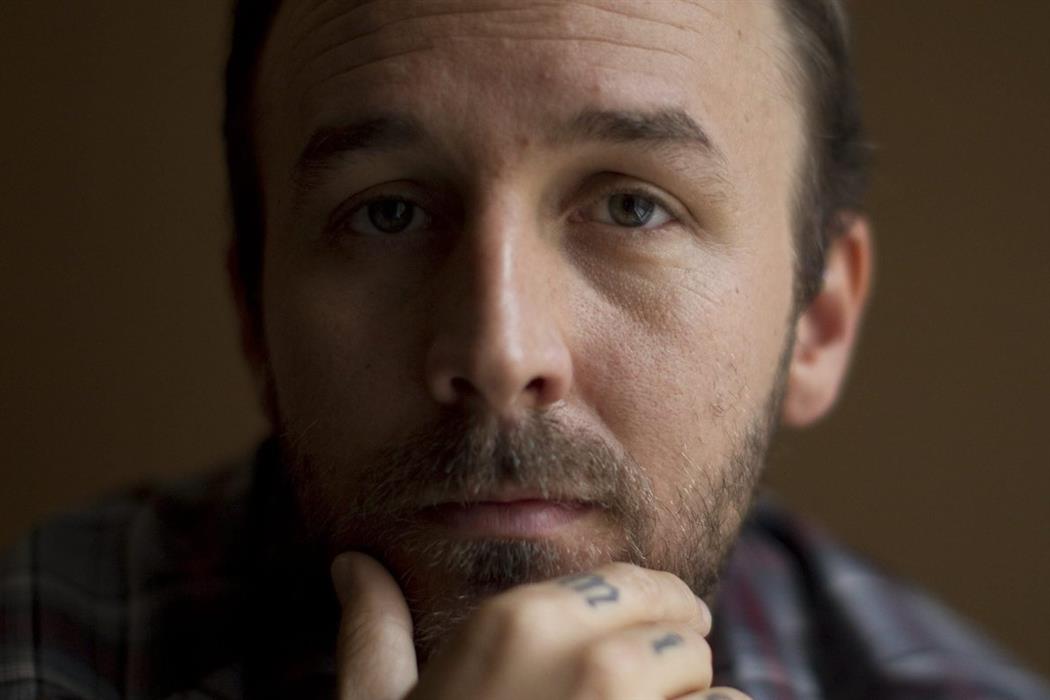
Having a unique style or chosen genre is what many directors create as their calling card to the cinematic world. Within a handful of films a director can establish themselves with distinctive narrative sensibilities and artistic flair and become synonymous with bringing the audience a particular vision.
However, some directors change tact from one film to another, keeping film lovers on their toes by not knowing which avenue they are going to take us on a journey down. Derek Cianfrance is one of those directors whose body of work to date has shifted from one genre to another and whose next move is hard to predict. Yet as his films may traverse different scopes, there are elements that intertwine that show Cianfrance’s love of cinema, his methods for authenticity and how music is a crucial element within his work.
An educated start in film
Derek Cianfrance grew up in Lakewood, Colorado loving and making movies, with his teenage years proving formative to developing his passion. He attended the University of Colorado where he studied under avant-garde filmmakers Stan Brakhage and Phil Solomon. His first ventures into filmmaking resulted in awards in student filmmaking and a special Dean’s Grant for his film Raw Footage.
At the age of 23 he wrote, directed and edited his first feature film Brother Tied (1998) which premiered at the Sundance Film Festival. The film, mostly shot in black and white in Cianfrance’s home state of Colorado, tells the story of two brothers named Cal and Aaron whose relationship is tested when Aaron takes a disliking to Cal’s new friend. The film travelled the festival circuit, picking up six awards during its tour and showcased promise for Derek Cianfrance as a new talent.
However, he shifted gear for his next projects, which would highlight his other interests. In addition to movies, Cianfrance has a passion for music, himself being a drummer, and he went into documentary territory with profiles on musicians/bands Mos Def, Run DMC and Sean Combs. After creating a catalogue of musical documentaries, Cianfrance would return to the world of fiction with a film that took him almost a decade to write, but would catch the attention of Hollywood.
Blue Valentine (2010)
Cianfrance’s second feature, the beautiful bruiser Blue Valentine (2010), would catapult him into the consciousness of the film world and would display his burgeoning visual flair. The film documents the relationship between Dean (Ryan Gosling) and Cindy (Michelle Williams), whose marriage begins to deteriorate through resentment and the decaying of time. The film tells their story in a nonlinear style, in two time frames, so we start at the decline of their marriage and piece together their relationship in flashbacks, the harsh reality of the present cut together with their meet-cute blossoming romance.
And this is what makes Blue Valentine so cruelly bittersweet, by interplaying between the shifts in time; we see both the destruction and long for the joy. It becomes even more affecting by the naturalistic chemistry that Gosling and Williams have, created through Derek Cianfrance having the actors live together for a month before shooting, to imbed the sense that they were a couple. Their closeness, built upon before the cameras rolled, creates a sense of authenticity and rawness. We believe every gesture and every heartfelt and heartbreaking interaction.
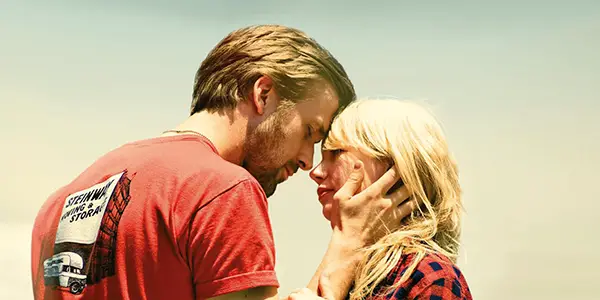
Cianfrance also deployed tactics to make the chemistry of their early romance believable and seem like we were in the moment with them. In the scene where Dean plays the ukulele whilst Cindy tap-dances in the doorway of a shop at night, Cianfrance asked his leading man if he had any special skills or if he could play any instruments. Gosling pitched the idea of Dean playing the ukulele, which Cianfrance initially rejected; however, when Gosling left him a voicemail singing “You Always Hurt the One You Love” together with the ukulele, Cianfrance was sold.
The director instructed Gosling not to tell Williams that he would sing and play during the scene, so that it would come as a surprise, but similarly Cianfrance asked Williams if she had any hidden talents. Williams told him she could tap dance so again Cianfrance asked Williams to showcase this in the scene when Dean asks Cindy if she has any hidden talents, but not to let on to her costar what it was. When it came to shooting the scene, it was a lightning in the bottle moment, with the crew having to pay the shopkeepers on the street to keep their lights on during the evening and the cameraman filming handheld. As Dean performs and Cindy tap dances, you feel the sense of improvisation and spontaneity and you really invest yourself in their relationship, which makes it all the more bittersweet knowing how their marriage has eroded.
Cianfrance also created the intimacy and claustrophobia of a relationship by using intrusive camera angles and close-ups of the couple, often framed as if no one else exists, positioning us with Dean and Cindy. His direction through the film feels organic and natural; there is no sense that it is staged, which again was executed by Derek Cianfrance’s tendency to conceal what would happen in the scene to each of his leads.
The music used in Blue Valentine is mainly composed by Brooklyn band Grizzly Bear, which lends to the film’s sense of a journey through a relationship, by having a soundtrack that plays out like the duration of an album. This is apart from Gosling’s vocals and the appearance of a song, an unreleased demo from 1970 by Penny and the Quarters, whose backstory is just as bittersweet as the couple’s relationship and becomes Dean and Cindy’s ‘song’. Derek Cianfrance proves he knows exactly where to position a song to achieve maximum impact.
Blue Valentine is a hard film to watch, and it is almost too painful to revisit, but perhaps you only need to see it once as it leaves such an imprint on the conscience. You are left wounded with battle scars akin to the personal suffering of the deterioration of a previous relationship. But it did herald Cianfrance as an exciting new director, whose next film would be strongly anticipated.
The Place Beyond the Pines (2012)
For his next feature Derek Cianfrance shifted gears completely away from the intimacy of a relationship, seen without the rosy filters, to an epic crime drama that spans nearly two decades, weaves together multiple subplots and has characters that are connected to one another. Derek Cianfrance again turned to Ryan Gosling to play one of the central parts, but due to Gosling’s commitment issues to Gangster Squad, production on The Place Beyond the Pines was rushed.
Initially, Cianfrance thought about waiting a year to prepare more and to give Gosling time to complete his other movie. But he knew that if he left it, he would never make the film—that he had to jump into the enormity of it before he lost the nerve to do it. The film was shot for around $10 million in 50 days, and as a result, Cianfrance has called the making of Pines miserable, that he was doing impossible things, that it was rushed and was a crazy time for him. And yet despite the herculean effort it took to film in the short timeframe and on the small budget, the film actually benefited from the off screen angst, with Derek Cianfrance admitting that everything he was feeling was used in Pines, creating the angst onscreen.
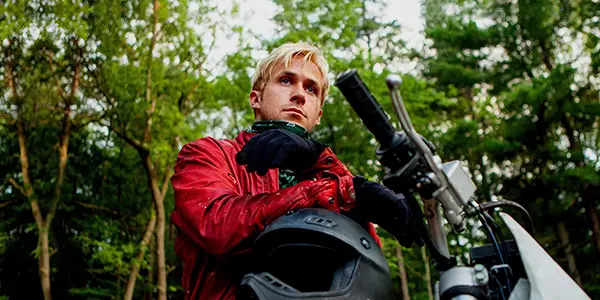
This sense of urgency and turmoil is all there in The Place Beyond the Pines: we are immediately placed into the story and with Gosling’s character Luke, a motorcycle stunt driver. Using a steadicam, we follow behind Luke, a device often used by Cianfrance, with the sounds of the fairground emanating as he prepares for his dangerous stunt. As he rides in a spherical metal cage with two fellow motorcyclists, the shot stays with the action and acts as a precursor to the circle Luke finds himself caught within.
An old flame from Luke’s past, Romina (Eva Mendes), turns up at the fairground and informs Luke that he has a son, which sets a catalyst for a course of actions and consequences that will have far-reaching effects. As Luke turns to crime to provide money for his son, he teams up with local auto repair owner Alex (Ben Mendelsohn), who has taken Luke under his wing and has himself robbed banks before. But when Luke makes the ill advised decision to go it alone, a botched robbery turns into a collision course with rookie cop Avery Cross (Bradley Cooper), ending in tragedy. Pines then shifts in tone as the film focuses on Avery, a father himself to a son, who at first seems like a well-meaning, unassuming cop just trying to do the right thing to a politically-motivated man, much more calculating and determined than the ‘hero’ he is heralded as. Avery’s conscience is conflicted by the police corruption he is exposed to, yet he uses his position and information to move into a job as assistant district attorney.
The film then makes a dramatic leap 15 years forward to bring the threads of Luke and Avery’s actions to a dramatic crescendo, to show how the sins of the fathers, a bank robber and an ambitious cop, will impact their son’s lives and the ramifications will haunt their future. It is a bold piece of storytelling by Cianfrance, who co-wrote the film with Ben Coccio and Darius Marder. Whilst it is vastly different than Blue Valentine in terms of scope and narrative, there are elements that Cianfrance weaves into the film that belie his sensibilities. Derek Cianfrance is a director who likes a film to feel alive, so improvisation was again encouraged, with many of the film’s memorable lines/moments being created off the cuff.
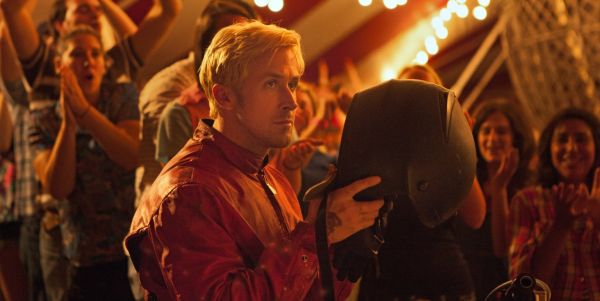
In the scene where Alex tells Luke how they are going to rob the banks, he tells Luke how their combined talents will come together, to which Gosling comes up with the line ‘’Not since Hall and Oates has there been such a team.’’ Mendelsohn laughs, catches Gosling’s drift and says “Oh, I got to be the curly haired one and you gotta be the good looking one?’’ Mendelsohn also came up with the line, ‘’If you ride like lightning, you’re gonna crash like thunder’’ which became almost the mantra of the movie for Derek Cianfrance, the feeling that all the narrative strands he was juggling and the time constraints on the film would envelope him.
Music is also a central part to The Place Beyond the Pines, with Cianfrance calling on the services of one of his all-time heroes Mike Patton, formerly of the band Faith No More, who had begun to compose movie scores. Whilst Cianfrance was a fan of the style of using zeitgeist contemporary music, influenced by films such as The Graduate and Harold and Maude, this time for Pines it was a majority of composed score. Patton brings an ominous sense to the music; it is less melodic and more brooding, and it brings an atmosphere of forewarning to the narrative, that there is tragedy and affliction written in the stars. Though there is also beauty within the dark, flashes of happiness before the bubble bursts, as in the scene where Luke and Romina rekindle their romance. Derek Cianfrance creates the intimacy of a couple with his close-up framing coupled with Patton’s dreamy notes. There is also a level of authenticity brought again to the screen through the pairing of real life couple of Gosling and Mendes, their chemistry bringing an extra element to the proceedings.
With Pines, Derek Cianfrance had stepped up his cinematic game; though it might have been an arduous shoot, he had shown he could not only handle the beauty and ugliness of romance, but also a multilayered narrative, with stylistic flair and expansive vision. Like the final shot in Pines, as Luke’s son Jason rides away on his motorcycle, framed in an aerial shot, the road appeared to be open to Cianfrance to go wherever he wanted next.
The Light Between Oceans (2016)
For his next film, Derek Cianfrance would change tack again and for the first time in his career, he chose to film an adaptation of a novel, rather than writing an original screenplay. Based on M L Stedman’s book, The Light Between Oceans is a grand sweeping drama, one that Cianfrance was drawn to for its central themes. It would allow the director to make a film in the vein of some of his idols such as Douglas Sirk and Victor Fleming, a period piece akin to the heartwrenching melodramas of the golden age of Hollywood.
The film begins in 1918 and tells the story of Tom Sherbourne (Michael Fassbender), a man scarred by the atrocities of World War I, who is seeking work after his discharge from the army. He takes a temporary job as a lighthouse keeper on the remote island of Janus Rock off the coast of Western Australia, which will afford him the solitude and peace that he craves. Before he embarks to his post, he meets the townsfolk of the village and strikes a connection with a young woman named Isabel Graysmark (Alicia Vikander), who is living in a town that is in mourning, she herself having lost two brothers in the war.
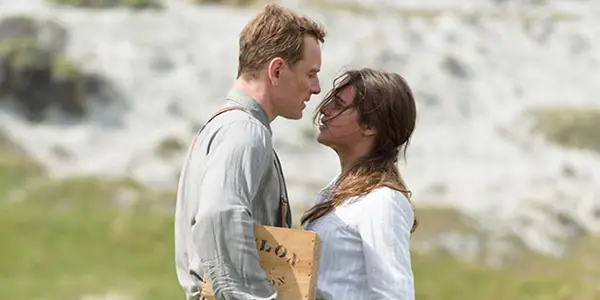
The pair marry and move to Janus Rock permanently and at first they are blissfully happy, carving out their version of harmonious paradise. Their bliss, however ,is torn apart when Isabel suffers two devastating miscarriages and she turns into a hollow shadow of her former self, the light inside her slowly dying. Then a miracle happens: a rowing boat washes up on the shore carrying a newborn baby and Isabel, in her grief and desperation to have a child, persuades Tom to keep the baby. However, their decision has devastating consequences and becomes an agonising dilemma when they discover the real mother of the baby on the mainland, who is grieving for the partner and child she believes she will never see again.
The Light Between Oceans is a very different film tonally and thematically to Derek Cianfrance’s previous work. It feels more rigid and restrained due to the period setting and the source material, with the camera remaining focused and classical compared to the bursts of urgency and off the cuff style seen in his previous two features. In the scenes between Tom and Isabel and when they begin to raise the child they name Grace, however, there is the closeness that Cianfrance favours within his work.
However, the emotions are also played on a grand scale rather than peppering the narrative. This is the stuff of an overwrought weepie, designed to blatantly pull on the heartstrings of the audience, rather than being quietly devastating like in Blue Valentine. If Cianfrance was hoping to create a film which echoed the melodramas of the 1950s, then he has succeeded, particularly recalling the work of Douglas Sirk, whose narratives were supremely sentimental. It is the type of film that relies heavily on coincidence and circumstance, and so is aided by committed and heartfelt performances from Fassbender and Vikander, whose conviction manages to steer the film when it sails into choppy waters.
As with Cianfrance’s passion for music, this score was crucial to creating the mood and also the flow of the film, and again the director tried something new, this time by working with a classical score composer. He worked closely with Oscar-winning composer Alexandre Desplat, whose input helped define and shape the film; he would send Cianfrance parts of the music which would frame the narrative and represent the characters. Derek Cianfrance imagined the characters as instruments; in particular, Isabelle represented the piano, and so she would have her own theme, one that she played on the piano and would follow her journey through the film.
For Cianfrance, who favours an element of authenticity, he asked Alicia Vikander to learn to play piano and for Desplat to create a piece for her to learn, one that would create the mood for her character. In addition to Desplat’s stirring score, the diegetic sound would become integral to the atmosphere, especially the wind and the waves that surround Tom and Isabel. The film begins with a black screen accompanied by the sound of the waves on the shore, which will come to represent the narrative to come, the temperamental nature of the sea. The provider and the taker would set the scene for the fleeting happiness that would come in and out of Tom and Isabel’s lives.
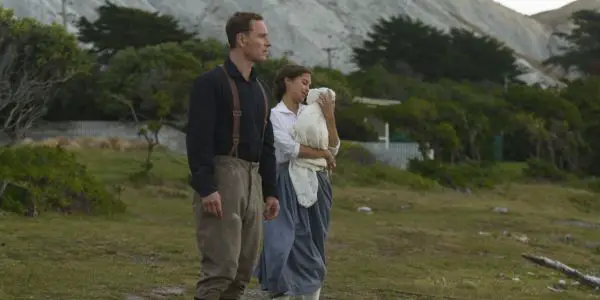
As with his previous work, Derek Cianfrance would be afforded an extra frisson of depth to the storytelling which would manifest onscreen. The cast and crew lived together on the island creating a sense of unity, and like his real-life couple pairing of Gosling and Mendes in The Place Beyond the Pines, Fassbender and Vikander fell in love both on and off-screen. Cianfrance commented that there was a definite overlapping between the narrative and their off-screen chemistry and they left the island as a couple.
Cianfrance’s decision to film an adaptation was a chance for him to ‘get out of his own head,’ so when The Light Between Oceans was met with a muted critical reception and under-performed at the box office, the director took this hard. It prompted the director’s wife Shannon Plumb to pen an open essay questioning the validity and morals of film critics whose negative reviews she believed had cost the film substantial money at the US box office. She cited that there was a review embargo before its premiere; however, this was breached, and she claimed this impacted the success of the film.
The reception that The Light Between Oceans received knocked Cianfrance for six; his calling card to some of the movies he loved had not played out in the way he had hoped. Whereas Blue Valentine and The Place Beyond the Pines had received mostly universal praise, The Light Between Oceans was not talked about in the same high standard as his previous work. Whilst the film is a handsome affair with richly emotive performances, it is perhaps not the best representation of Cianfrance’s style and did not allow his strengths for his craft to flourish in the way they had before.
Conclusion
News of Derek Cianfrance’s next feature has been fairly quiet, and the initial buzz that marked him as a talent to watch off the back of Blue Valentine has wavered. The emergence of new, young, prodigious directors stealing the headlines, such as the likes of Damien Chazelle, has seen the name of Derek Cianfrance fall slightly by the wayside. But that does not mean he is down and out, and after licking his Light inflicted wounds, he appears to be going back to what he knows. His next feature will see the director turn to a playing field he knows well; music.
Metalhead, which is currently in post-production, is the story of a heavy metal drummer who blows his eardrums and must adapt to a world where sound has been changed irrevocably. Derek Cianfrance is drawing from his own experience; having blown his own eardrums as a drummer and suffering from tinnitus, he wanted to explore the ideas of sound within cinema. Returning to familiar ground and concentrating on music, something he truly loves, should see Cianfrance return to the form he has stylishly displayed in the past.
The director has commented that he sees his movies in his head, but when he goes on set, he wants it to be different, he wants it to be alive, and his previous films, particularly Blue Valentine and The Place Beyond the Pines have shown this. They have an urgency and spirit that feels raw and daring, one that doesn’t feel overproduced and is open to the possibilities and magic of cinema. It is this that makes Cianfrance’s next move, however different it may be from his last, one to watch and eagerly anticipate.
Which Derek Cianfrance film do you like best? Is his current body of work too different to identify his directing style?
Does content like this matter to you?
Become a Member and support film journalism. Unlock access to all of Film Inquiry`s great articles. Join a community of like-minded readers who are passionate about cinema - get access to our private members Network, give back to independent filmmakers, and more.













